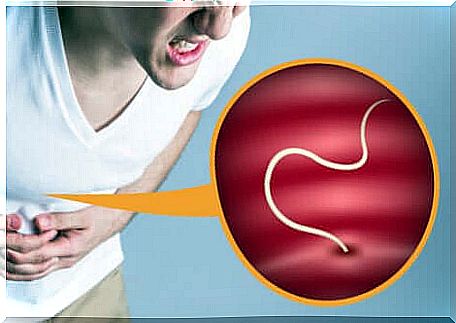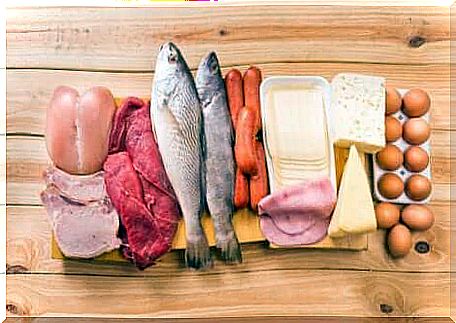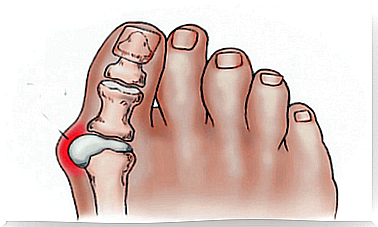The Most Common Food Parasites

Food parasites are a common cause of food poisoning. What are the most common of them? Here we describe them in detail and give some strategies to avoid them.
Food parasites are a series of microorganisms that can pose a threat to human health. They are absorbed with food and have the ability to colonize certain parts of the digestive tract or produce harmful toxins.
It is important to know what are the most common of them and what are the necessary measures to avoid their consumption.
It should be noted that one of the most common reasons for visiting the emergency room is food poisoning. This situation is usually generated by poor hygiene practices that result in the ingestion of pathogens that cause digestive problems.
However, some of them can develop allergic processes and affect other vital organs, such as the liver. What other threats do they cause? We’ll tell you more about it later.
Food parasites – what are the dangers?
In many cases, food parasites are eaten without being aware of their presence in food due to their small size. It is also possible that the product contains only the pathogen’s eggs that will hatch in and around the digestive tract until it causes short-term damage.
Perhaps this is one of the most complicated cases to treat as the parasite settles inside the subject and causes a permanent health problem. It should be noted that this series of organisms can grow in a wide variety of foods. They can appear in fresh products, but also in canned food.
Quite often they can be found in meats that have not been properly processed, even in some fish. Once they develop in the body, they can be transferred by contact, especially if hand hygiene is not respected.

The main food parasites
A paper in Advances in Food and Nutrition Research states that food borne parasites are one of the most neglected groups of pathogens given their complexity and high prevalence in marginalized populations.
However, in recent years, they have spread to other populations and have been linked to unexpected symptoms. What are the most common? How can I reduce the risk of infection? It is very important to answer these questions. We’ll show you more on this below.
Taenia solium
It is also known as “armed tapeworm”. It is a microorganism found primarily in pork that has not been properly treated or decontaminated during the process that takes place in the slaughterhouse.
Tapeworms can develop in the intestine as a result of eating contaminated food. They look like worms and have the ability to absorb the nutrients that are ingested in the food.
According to research published in the journal Parasite Immunology, this can lead to progressive weight loss in humans and, consequently, to a state of malnutrition.
Echinoccoccus granulosus
Basically, it is a parasite that lives in the intestines of dogs. However, it has been shown that it can also be transmitted to humans through the consumption of contaminated meat from other animals, such as pork.
It is a tapeworm-shaped organism, albeit smaller. It eats protein, which reduces the bioavailability of the amino acids for human use. As a consequence, it significantly harms your health.
Toxoplasma gondii
This protozoan can cause human toxoplasmosis. It is a microorganism that lives mainly in cats and its transition to pregnant women has negative consequences for the fetus.
For treatment, it is necessary to use a number of drugs that act on the synthesis of folic acid. In this way, a negative impact on the life and reproductive cycle of the parasite is generated.
In the clinical picture of toxoplasmosis, symptoms of influenza, such as fever, stand out. This disease can even be fatal in immunocompromised people.
In addition, there are studies that confirm that infection with this pathogen may increase the risk of developing schizophrenia in the medium term.
Risk mitigation strategies
One of the most effective mechanisms for reducing the risk of food parasite infection is the use of extreme food hygiene measures. In this sense, it is necessary to properly wash consumer fresh products, except meat.
In addition, it is wise to ensure that the internal temperature of the food is high during cooking as it is an effective mechanism for eliminating any pathogens that may be inside.
At the same time, cookware for processing raw and cooked food should not be divided. It is also important to disinfect the cutlery in an optimal way, and also to wash your hands before preparing the food.
When subjecting some food to the freezing process, it is always recommended to defrost it in the refrigerator and avoid leaving the product at room temperature, as this may favor the emergence of eggs inside or on its surface.

Watch out for food parasites
Infection with food parasites is relatively common and is a problem that can seriously endanger human health. Not only does it affect the metabolism of nutrients or their availability, it can also cause liver damage and even the hypersensitivity reaction that conditions life.
Moreover, in the case of pregnant women, some poisonings are very dangerous as they may endanger the life of the fetus. In this sense, we always advise you to buy the highest quality food that has passed health inspection and has the appropriate certificates.
At the same time, it is important to fully cook the food to ensure the destruction of the potential pathogens that inhabit it. When preserving products, use methods that are safe and keep food in good condition to avoid the proliferation of parasites.









